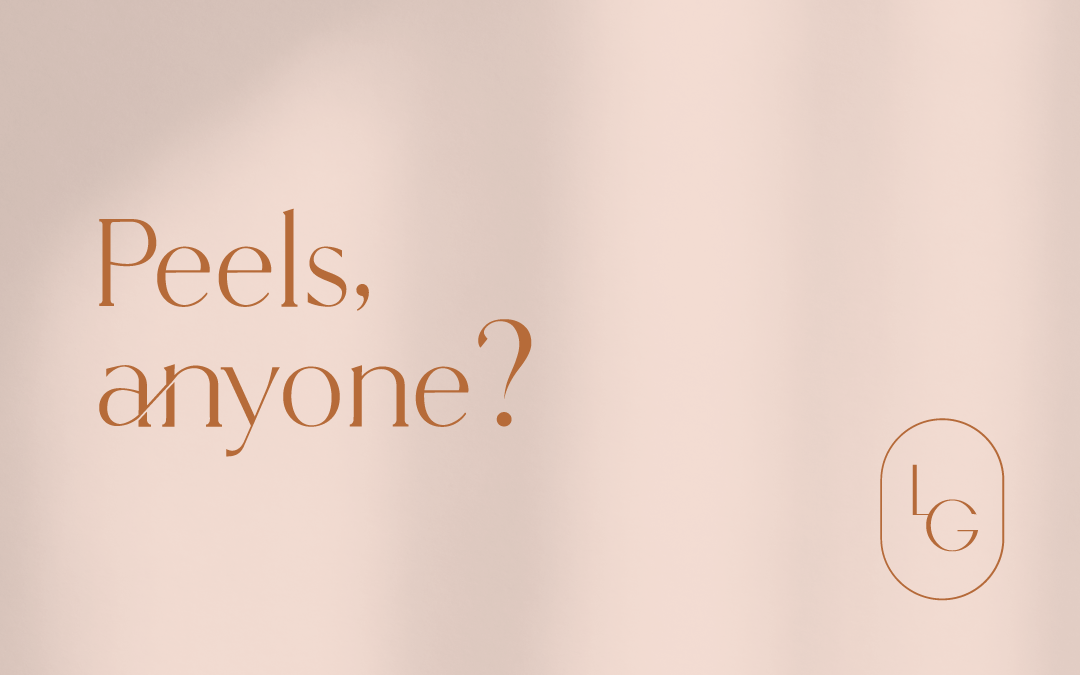Mention ‘Chemical Peel’ and it’s pretty much a guarantee what the response along with a wide-eyed look will be:
“Oh, that scares me.”
“I don’t like the idea of putting ‘Chemicals’ on my skin”
“I have very sensitive skin. Isn’t that bad for me?”
And of course, my all time favourite thanks to Sex in the City’s Samantha:
“Is it going to make me red?”
*Sigh*
As someone who has worked with Peels for well over a decade, both on clients and myself, I see firsthand the transformation that takes place. So, let’s put some of these myths to bed, allay some of the fears and discuss what peels are about.
First, you need to know that there is nothing to be afraid of. As someone who understands skin and working with peels, you are in very safe hands. The application of a peel is a controlled process where the skin is continually ‘read’.
When we use the term “Peel” or “Chemical Peel” what does that mean exactly?
The next level in facial treatment, when we say “peel” it most commonly indicates one that works at the epidermal (or surface level) of the skin, otherwise known as a ‘light’ Chemical Peel.
Going far beyond what is known as a regular facial, a surface peel is a treatment approach that can profoundly change and influence your skin. Deeper than a facial, but not so deep to cause problems, this level of peel is a great choice over more invasive treatments as it is safer to control. There is less chance of negative reactions or issues.
The other type of peel – the “what if I’m red à la Samantha (Sex in the City)” kind of peel? Samantha DID NOT have a light surface peel, for crying out loud. That kind of red would indicate a deep dermal level treatment which requires hiding out for a month while your face heals.
Most typically after a light peel, you leave our session looking like a million bucks – really! The main downside is around day 2 or 3, your skin starts to peel or shed. This usually lasts for a couple of days. In life before COVID, the peeling part was a big deal. Somehow now it doesn’t seem to be as much of a deterrent.And frankly, what better way to make the most out of wearing your mask? It will conceal the flaking when you are out in public!
Peels don’t only address texture, fine lines, and uneven complexions. When it comes to deeper skin concerns like pigment and acne, peels are just incredible. Especially for acne. The shift and results experienced in just one peel is surprising and delightful to acne sufferers who have often given up hope for their skin.
A few insights for you on peels.
There is so much more, and I could talk forever about all the different aspects, benefits, and ways to effectively use peels as part of your skin strategy. As a final footnote however, let’s bust that perceived bad word out of the equation. Just because the word ‘chemical’ sits next to the word ‘peel’, does not make it something bad. Let’s face it, isn’t everything a chemical ingredient anyway? Enough said.
Most important to a successful outcome is understanding that every skin situation is personal and comes with its own set of unique circumstances. That’s why I take the time to discuss, analyze and evaluate your scenario. Only then can I translate the best, and most optimal approach – the one that works best for you.
If you want results, think peels. As part of a comprehensive approach to caring, correcting and age-prevention, peels can be an invaluable ally. Applied strategically, seasonally and over time, they not only have immediate results (yay!) but also long-term benefits (hello fabulous future face).
THE OTHER STUFF YOU NEED TO KNOW:
As a one-off facial, this type of peel is a good clean up for your skin. To obtain more profound results, and for transformation (corrective work) to take place, a course of peels (preferably three) is recommended. And of course, always in concert with a strategic home care program.
Ready to book a peel? Let’s begin.

